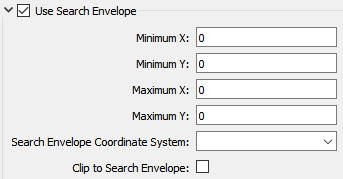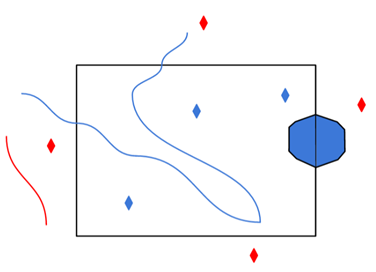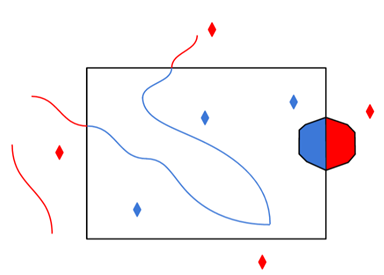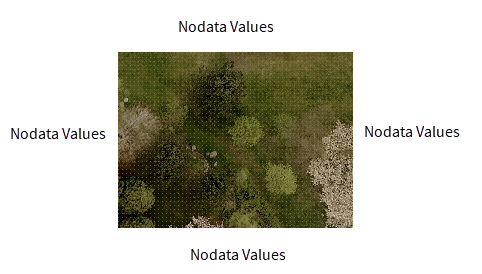Action to Take on Update Files
Apply
Choosing this option will cause the S-57 reader to apply all updates available for the datasets read. That is, if there are files ending in .011, .002, and so on, in the same folder with base datasets (ending in .000), these update files will be read and applied to the base feature set in accordance with S-57 update rules.
Note: DSSI dataset-level metadata will correspond to the originally read feature set, not the updated feature set.
These additional attributes are also added:
|
Attribute Name |
Description |
Defined On |
|---|---|---|
| s57_update_file{} |
The list of filenames that have been used to update the current feature. These list entries are paired with the s57_update_type field so that together they specify a list update operations from a list of files. For example: s57_update_file{0} = mys57file.001 s57_update_type{0} = INSERT |
Updated features |
| s57_update_type{} |
The list of update types that have been performed on the feature. Possible values are Insert, Modify, or Delete. These list entries are paired with the s57_update_type field so that together they specify a list update operations from a list of files. For example: s57_update_file{0} = mys57file.001 s57_update_type{0} = MODIFY s57_update_file{1} = mys57file.002 s57_update_type{1} = MODIFY |
Updated features |
For information on all attributes (including generic attributes that appear on all features), see Feature Representation.
Ignore
Choosing this option will cause the S-57 reader to ignore all updates.
Features
Read Spatial Objects as Features
Allows primitives to be read as individual features, whereby each feature has some extra information that could be used in future for writing to a S-57 dataset.
S57 Type
This parameter specifies which enhanced version of S-57 dataset to read. This is used only during schema generation (workspace generation) and has no effect during normal reading.
The reader processes the schema according to the selection:
- ENC 3.1 (default): The dataset is interpreted as the original S-57.
- Additional Military Layers 1.0
- Additional Military Layers 2.0
- Inland Waterways
- IENC 2.3
- IENC 2.4
Advanced
The S-57 reader depends on CSV text files with definitions of S-57 object classes, and their attributes. The set of files used is determined by the selected S57 Type. See the Feature Representation section for more information.
Custom Object Classes File
A CSV file containing custom object classes. Object class definitions in this file will override existing definitions with the same code.
Custom Attributes File
A CSV file containing custom attributes. These attributes will be added to all object class definitions. Attribute definitions in this file will override existing definitions with the same code.
Schema Attributes
Use this parameter to expose Format Attributes in Workbench when you create a workspace:
- In a dynamic scenario, it means these attributes can be passed to the output dataset at runtime.
- In a non-dynamic scenario, this parameter allows you to expose additional attributes on multiple feature types. Click the browse button to view the available format attributes (which are different for each format) for the reader.
A search envelope (also known as a bounding box) is a rectangular area that defines a geographic area. In FME, the easiest way to define a search envelope is to use search envelope parameters.
Defining a search envelope is the most efficient method of selecting an area of interest because FME will read only the data that is necessary – it does not have to read an entire dataset. Search Envelope parameters apply to both vector and raster datasets and can be particularly efficient if the source format has a spatial index.
Most FME readers have parameters to define the search envelope of data that is being read:

The parameters include the x and y coordinates of the bounding box as well as a parameter that defines the coordinate system.
How to Define the Bounding Box
Using the minimum and maximum x and y parameters, define a bounding box that will be used to filter the input features. Only features that intersect with the bounding box are returned. Note that the bounding box intersection is not a full geometry intersection (based on spatial relationships) that would be returned by a transformer like the SpatialFilter.
Note: If all four coordinates of the search envelope are left at 0, the search envelope will be disabled even if this option is checked.
Search Envelope Coordinate System
Note: This option is not available in all readers.
Specifies the coordinate system of the search envelope if it is different than the coordinate system of the data. The coordinate system associated with the data to be read must always be set if this parameter is set.
If this parameter is set, the minimum and maximum points of the search envelope are reprojected from the Search Envelope Coordinate System to the reader’s coordinate system prior to applying the envelope.
The underlying function for Use Search Envelope is an intersection; however, when Clip to Search Envelope is checked, a clipping operation is also performed.
- When checked (set to Yes), this option instructs FME to clip features to the exact envelope boundary. FME removes any portions of imported features being read that are outside the search envelope.
- When left unchecked (set to No), features that overlap the boundary will be included in their full (unclipped) form.
|
Clip to Search Envelope: No |
Clip to Search Envelope: Yes |
|---|---|
|
Any features that cross the search envelope boundary will be read, including the portion that lies outside of the boundary.
|
Any features that cross the search envelope boundary will be clipped at the boundary, and only the portion that lies inside the boundary will be read.
|
|
The search envelope includes the bounding box and the extent of the raster.
|
The search envelope includes only the area within the bounding box. The raster size will still match the bounding box, but the area without data will be filled with Nodata values to represent the absence of data, if the source raster has them. Raster Nodata may be a single value across all bands, a single value per band, or a separate alpha or transparency band that indicates the lack of data values (this is more common in images than other types of rasters).
|



